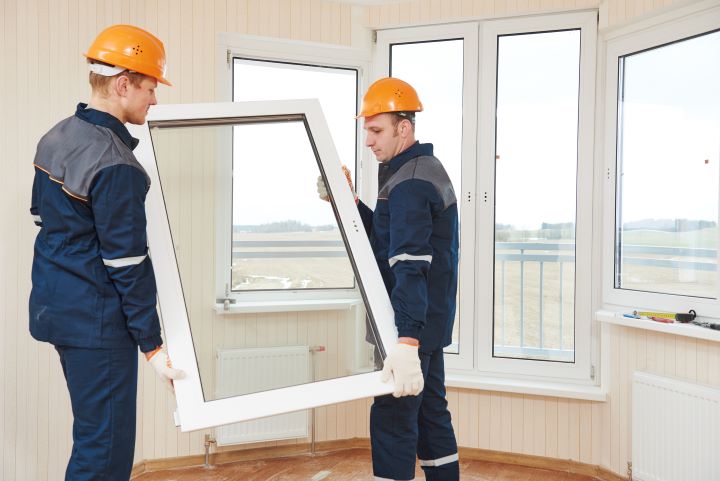Home Window Replacement: The Ultimate Upgrade Guide
Thinking about replacing your home's windows? This comprehensive guide explains types of replacement windows, energy-saving features, installation choices, costs, and upkeep. Learn how modern windows can boost curb appeal, lower utility bills, increase resale value, and what to consider before you invest in new windows.

Replacing your home’s windows is one of the most noticeable and practical upgrades you can make. New windows improve curb appeal, comfort, and energy efficiency, and they can increase resale value. This guide walks through the main window materials and styles, energy-performance features, the trade-offs between DIY and pro installation, typical costs and return on investment, plus simple maintenance tips to keep your windows performing well for years.
Types of Replacement Windows
There are several popular materials and styles available today, letting homeowners match aesthetics, performance, and budget. Common materials include:
- Vinyl: Low-maintenance and cost-effective, vinyl windows provide solid insulation and resist warping or rotting. They’re often the most budget-friendly option.
- Wood: Favored for their classic look and customization options, wood windows provide excellent aesthetics and can be painted or stained. They typically require more upkeep to protect against moisture and weathering.
- Fiberglass: Extremely durable and dimensionally stable, fiberglass offers strength and longevity comparable to wood with less maintenance. It performs well in extreme temperatures.
- Aluminum: Lightweight and strong, aluminum windows are slim-framed and offer a contemporary look. They conduct heat more readily than other materials unless thermally broken.
Within these materials you’ll find styles such as double-hung, casement, sliding, awning, and picture windows. Your choice should balance architectural compatibility, ventilation needs, and budget.
Energy Efficiency Considerations
Upgrading to modern, energy-efficient windows can lower heating and cooling costs and boost indoor comfort. Key features to consider:
- Multi-pane glass: Double- or triple-pane glazing reduces heat transfer. More panes typically mean better insulation.
- Low-E coatings: Low-emissivity coatings reflect heat back into the house in winter and block solar heat in summer, improving year-round efficiency.
- Gas fills: Argon or krypton gas between panes increases thermal resistance compared with air.
- Proper frame insulation: Frame materials and thermal breaks affect overall performance.
Energy-efficient windows can reduce energy use substantially—often between 12% and 33% annually depending on local climate, existing windows, and the specific products chosen. Look for ENERGY STAR ratings and check U-factor and Solar Heat Gain Coefficient (SHGC) values to compare performance.
Professional Installation vs. DIY
Some homeowners with strong carpentry experience might attempt window replacement themselves, but there are important reasons to weigh hiring professionals:
- Proper fit and sealing: Installers ensure windows are square, plumb, and sealed to prevent air and water infiltration, which directly impacts efficiency and durability.
- Handling surprises: Pro crews can identify and repair hidden issues like rot, damaged framing, or flashing problems.
- Code compliance and permits: Professionals are familiar with local building codes and can manage necessary permits and inspections.
- Warranty protection: Manufacturer warranties may require certified installation to remain valid.
If you choose DIY, be realistic about skills and the tools required. Improper installation can negate the benefits of higher-end windows.
Cost Considerations and ROI
Window replacement is a significant investment. Prices vary with material, glass options, window size, and labor rates. Below is a typical cost breakdown to help set expectations.
| Window Type | Average Cost per Window | Installation Cost |
|---|---|---|
| Vinyl | $300–$700 | $100–$300 |
| Wood | $600–$1,200 | $150–$350 |
| Fiberglass | $500–$1,500 | $150–$350 |
| Aluminum | $400–$900 | $100–$300 |
Prices, rates, or cost estimates mentioned in this article are based on the latest available information but may change over time. Independent research is advised before making financial decisions.
Beyond upfront expense, consider long-term savings from reduced energy bills, increased home value, and fewer maintenance costs. Energy-efficient upgrades can pay back part of the cost through lower utilities and improved marketability, though actual ROI depends on local energy prices, climate, and the quality of the installation.
Maintenance and Care
Caring for replacement windows is generally straightforward but important for preserving performance:
- Clean glass and frames regularly using mild soap and water; avoid harsh chemicals that may damage finishes.
- Inspect seals, caulking, and weatherstripping at least once a year; replace degraded weatherstripping promptly to maintain efficiency.
- Lubricate moving parts and hardware according to the manufacturer’s recommendations to avoid sticking or wear.
- Check for signs of water intrusion, rot, or frame damage around wood windows and address issues early to prevent larger repairs.
- For painted or stained wood frames, reapply finishes as needed to protect against moisture.
Most modern materials like vinyl and fiberglass need minimal upkeep compared with traditional wood.
Making the Right Choice
Start by identifying your priorities: energy savings, low maintenance, curb appeal, or budget constraints. Get multiple quotes from reputable contractors, ask for references, and request product specifications including U-factor and SHGC. If pursuing financing or incentives, ask about local rebates, tax credits, or utility programs that support energy-efficient upgrades.
Selecting the right windows and ensuring professional-grade installation are both crucial to maximizing the benefits of a replacement project. With the right planning, new windows can deliver improved comfort, lower energy bills, and a noticeable boost to your home’s appearance and value for many years to come.






